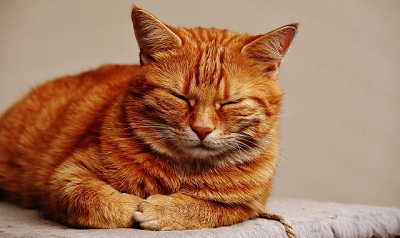How Cat’s Behavior Change as They Age
How Cat’s Behavior Change as They Age
Cats go through a whole spectrum of changes as they age. Many of them develop various ailments that can vary from the mildest forms to more several ones. Feline experts explain that behavioral changes in cats in senior age usually appear as a result of one of two possible ways – aging and disease. Behavioral changes that occur due to aging process include decreased level of activity, forgetfulness, some form of irritability, changes in schedule, etc. To determine whether these changes are a natural part of aging or come as a result of disease, we need to keep ourselves informed of all possible changes that we can expect. According to experts, more than half of cat population that reach their golden years begin experiencing some form of disease similar to dementia in humans. Thus, some cats can become disoriented, forgetful or confused. Some cats can urinate outside the litter box; some can pace all the time over and over, while others can completely switch their schedule – sleep during a day, and being more active at night. Keeping a cat’s regular schedule consistent, maintaining cat’s daily habits stable and stick to a routine will easier a cat transition into his/her old age. Many veterinarians do not recommend changing the food that a cat became accustomed, except for medical reasons. Consistency and routine help a cat feel more secure and safe while going through the natural process of aging and facing with an inevitable deterioration of his/her body. To find out more about how cat’s behavior change as they age, the article “How Your Cat’s Behavior May Change with Age” gives us the useful information.
How Cat’s Behavior Change as They Age
1. More Talkative
2. Restlessness or Waking at Night
3. Disorientation and Confusion
4. Using the House as a Litter Box
5. Becoming Emotionally Distant or Especially Needy
6. Apathy with a Decrease in Activity
7. Crankiness and Irritability
8. Unprovoked Aggression
9. An Upside-Down Schedule
10. Pacing … pacing … and pacing
Apart from dementia, another big issue that almost all senior cats experience during aging is a pain. For some cats, a problem with pain can be easily detected, but for others, it is a complex issue. Cats usually do not like being vulnerable and will do anything to hide the signs of vulnerability. They have learned during their lifetime how to mask pain and keep all the signs inside. For that reason, we should put a lot of effort and learn to recognize the signs of hidden pain like reclusiveness, excessive grooming, prolonged sleeping, refusing to eat, etc. To help a cat cope with all the challenges that bring the old age, experts suggest that aging is normal and it is not some form of a disease. We can help a lot, but should settle with the fact that our beloved furry friend gets older and will encounter difficulties that are the regular part of the process.










